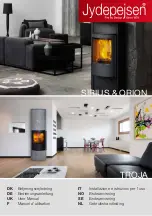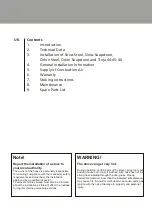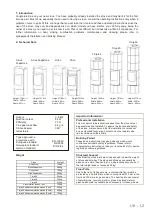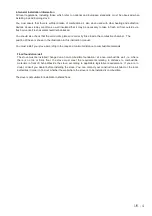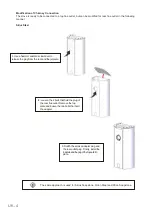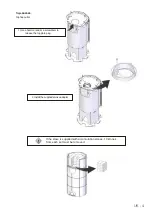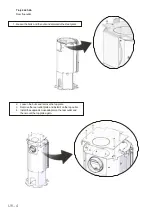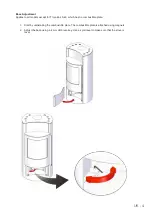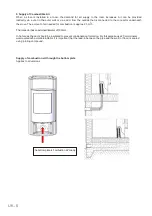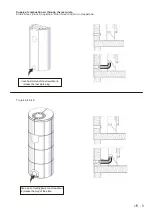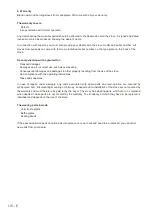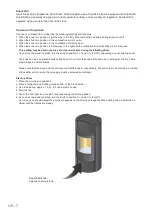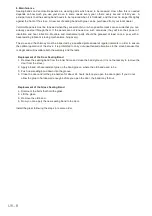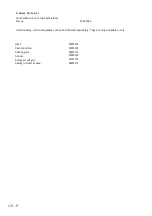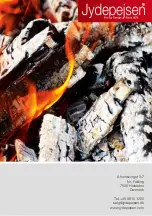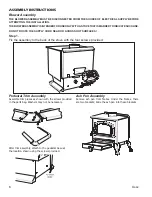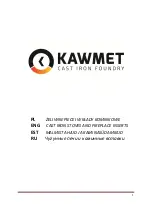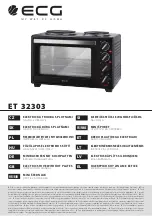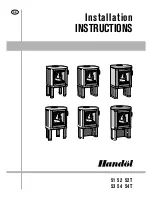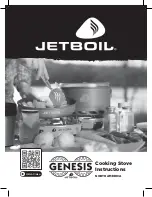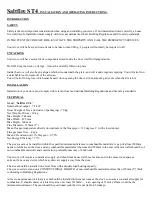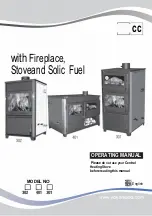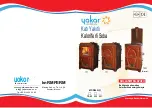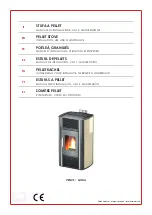
7. Stoking Instructions
It is very important to ensure that your chimney has a decent draught (at least 12 Pa chimney draught). The
Alpha and Omega is the cooperation between the chimney and the stove. The draft is affected both by the
length and the area of the chimney, as well as by how well the chimney is sealed. The minimum recommended
chimney length is 3.5 m, and the suitable cross-section area is 150-200 sq. cm (140-160 mm in diameter).
Your dealer or your chimney sweep will be able to guide and advise you on your chimney conditions. If the
chimney has not been used for a while, it has to be inspected for blockages. In some cases, it can be relevant
to install a draught control device in order to be able to control the draught in the stove.
Fuel
The product has been tested and approved pursuant to EN13240 and NS 3058 for stoking with split, dried birch wood
with a water content of 12-20%. Stoking with wet firewood results in soot, environmental pollution and bad fuel
economy. Newly cut wood contains approx. 60-70 % water and is absolutely unsuitable for stoking. At least 1 year
of storage time is necessary for newly cut wood before it can be used. Regardless of the wood size, it should
always be split and have at least one bark-free side.
We strongly advise against stoking with impregnated, painted and laminated wood,
plywood, chipboard, domestic waste, milk cartons, printed paper or the like. The use of
these materials invalidates the warranty since they can produce poisonous corrosive
or hazardous fumes.
Furthermore, the poisonous gas dioxin can be produced, which is damaging both to
the stove and to the environment. USE RECOMMENDED FUELS ONLY
Recommended Fuels
The following table shows the calorific value of the different types of wood, which have been stored for 2 years
and have residual moisture of 15-17%.
Wood
Kg dry wood per m3
compared to
beech/oak
Hornbeam
640
110%
Beech and oak
580
100%
Ash
570
98%
Maple
540
93%
Birch
510
88%
Mountain pine
480
83%
Fir
390
67%
Poplar
380
65%
1 kg of wood yields the same heat energy irrespective of wood type. 1 kg beech merely takes up less space than 1
kg of fir.
When this is settled, the next important step is to ensure that the chimney and the stove work well together.
This is done by following the operating instructions carefully and using dry fuel that inflames easily. For further
information on correct kindling and stoking, please refer to Jydepejsen's Manual for installation and stoking.
Please note that the stove paint will harden during the initial stoking. Touching the stove should be avoided since
this may cause the paint to scale. Ensure effective ventilation during this phase because the stove can generate
smoke and unpleasant odour. The smoke and the odour are not harmful and will dissipate after about 1 hour of
operation.
The stove will expand and contract during the stoking and cooling phase, which could result in creaking noises.
This phenomenon is completely normal for sheet-iron stoves and cannot be regarded as a fault. All Jydepejsen
wood-burning stoves are intermittent, which means that new wood should be added when there is a layer of
embers in the burning chamber.
Incorrect stoking or combustion is often due to wet wood or insufficient draft in the chimney. Always
make sure that the chimney is not blocked and that the vermiculite panels are properly placed. In
case of overheating or chimney fire, shut off all air supply and monitor the situation.
Never attempt to put off a chimney fire with water because steam will form (water evaporates at a rate of 1:1700),
resulting in a fast pressure build-up, which can cause serious damage to the chimney.
UK - 7

